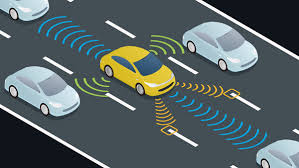

What are the problems with self-driving cars?
Safety. One of the biggest problems with self-driving cars is that they may not be entirely safe. A driverless vehicle needs to process its
surroundings to make judgment calls using perception and decision-making technology.
Ultrasonic sensors in the wheels detect curbs and other vehicles when parking. Sophisticated software then processes all this sensory input, plots a path,
and sends instructions to the car's actuators, which control acceleration, braking, and steering.
It does not turn a Tesla into a self-driving car nor does it make a car autonomous. Before enabling Autopilot, you must agree to “keep your hands on the
steering wheel at all times” and to always “maintain control and responsibility for your car.”
Automation can help reduce the number of crashes on our roads. Government data identifies driver behavior or error as a factor in 94 percent of crashes, and self-driving vehicles can help reduce driver error.
Higher levels of autonomy have the potential to reduce risky and dangerous driver behaviors.
Are self-driving cars safer than humans?
With that in mind, one way to assess the overall safety of autonomous vehicles is to say that in general, there will be fewer accidents, but that the rare ones that do occur will
be more serious than the average fender-bender accident involving vehicles driven by humans.
As of right now, the only option to pull over a self-driving car is to manipulate the safety programming. This happened a few years ago in San Francisco,
when police noticed an unresponsive driver slumped at the wheel of his Tesl